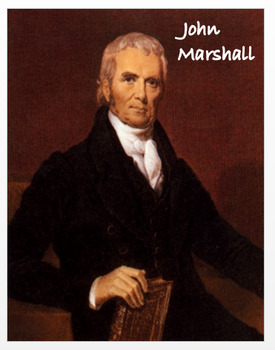"John Marshall" - Article, Power Point, Activities, Assess - Distance Learning
- Zip
- Easel Assessment
Description
The illustrated 5-page Article and 28-slide Power Point feature John Marshall - his political career, his role in the XYZ Affair, and the three Supreme Court cases with which he set the foundation of the Judicial Branch and its responsibilities within the Federal Government, as well as, establish the concepts of Judicial Review, Implied Powers, and Supreme Court Appellate Jurisdiction. Activities and Assessment included.
Lesson includes:
- 5-Page Illustrated Article
- 28-Slide Power Point Presentation
- Multiple Choice / Document Based Question Assessments + Answer Keys
- DBQ Scoring Rubric (allows students to easily score each other's short answers)
- John Marshall Crossword + Crossword Key
- Activity: Identifying Concepts
- Reflective Writing Activity: 3-2-1
- Graphic Organizer: Three Takeaways
- Historical Examination Form
- Support from Text Guide
- Visuals
- B+W Printables
- No Prep
- Lesson Duration can vary depending what is used.
- Can be used as: Classwork / Homework, Distance Learning, Sub Plan
Store: The Medieval World and Early Modern Times
Link to my Store: https://www.teacherspayteachers.com/Store/The-Medieval-World-And-Early-Modern-Times






